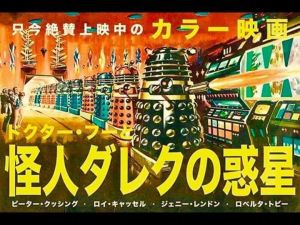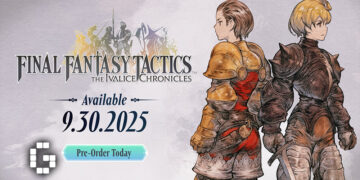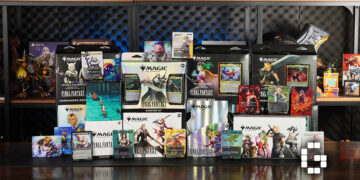The tokusatsu genre has been going especially strong lately, with Shin Kamen Rider recently releasing, Godzilla more popular than ever, and even Gamera is making a comeback. This has gotten me interested in Western Tokusatsu and while the first thing that comes to mind with that term is Power Rangers, I can’t help but look across the pond to the UK and Doctor Who, a show that is essentially British Tokusatsu.
Yes the Doctor wears bowties instead of spandex, but everything else checks out: strange and scary monsters that may be made from Kitchen utensils and a strange affinity for the sacred land of the rock quarry.
Yes I know, Tokusatsu in Japan just refers to a show that makes heavy use of special effects so, of course, Doctor Who as well as IPs like Star Wars and Star Trek would count as Tokusatsu. With Doctor Who though, I’d argue it goes further than that, the series makes use of several ideas and techniques that give it a lot in common with Japanese Henshin superheroes so why not go over them?
The Tokusatsu Genre

So let’s start by giving a brief look at the Tokusatsu genre in Japan. As previously mentioned, in Japan it refers to any sci-fi or fantasy tv show/movie that makes use of heavy special effects. However much like the term Anime or JRPG, it’s primarily used in the West especially to refer to Japanese titles and shows made in the style of Japanese titles.
There are two main subgenres of Tokusatsu: Kaiju, aka giant movie monsters like Godzilla, and Henshin, based around masked heroes like Kamen Rider, Ultraman, Gridman, and Super Sentai (known in international markets as Power Rangers). Both continue to this day and while each series bring something new to the table, the genre has brought a number of notable design formulas and tropes.
The most notable of these is Tokusatsu’s heavy use of practical effects. The genre usually consists of heroes dressed in motorcycle gear and monsters that are guys in rubber suits stomping or crawling their way into battle. They will often be shot in local fields or rock quarries disguised as evil lairs or other planets and the weapons are often literally stuck together with duck tape and glue, with lots of shiny bits to add to the sci-fi elements.
Many modern Toku will often use CGI as well but still in combination with these tried and true techniques to keep the cost down. While many will say it looks cheesy and cheap, for fans, this is part of the charm, adding a sense of realism and excitement as you know the character are actually performing these fights and actions. Chances are if you’re a fan of Doctor Who, this all sounds very familiar.
Doctor Who

Doctor Who premiered on BBC One in 1963, and quickly became popular for many of the same reasons as the Tokusatsu show, a costumed alien hero: The Doctor, travels throughout time and space with his many companions, battling various monsters and villains.
Like many Tokusatsu, Doctor Who’s BBC budget forced it to rely on heavy practical effects, especially back in the Classic Series run. The monsters were often stuntmen dressed in odd masks and rubber suits, there’s was even one monster that was pretty much just a guy covered in green bubble wrap. The acting likewise could often range more on the exaggerated and cheesy side as the Doctor and his foes attempted to outwit each other.
You can very much see the similarities between Doctor Who and Tokusatsu. These were budget sci-fi shows that squeezed so much strange imaginative storytelling into their small productions through the talents of the cast and crew. They’re even both split into different eras with “Classic” and “Modern” Doctor Who, as well as “Showa” (the 50s-80s) and “Heisei”(90s-2010s) eras of Tokusatsu both of which saw vast changes in storytelling, and effects between different iterations of each television series.
I could further go on to describe their often snazzy 60s-70s soundtracks and their delightful amounts of violence. Serious Kamen Rider, Sentai, and Doctor Who are all pretty great when it comes to darker action for kids especially the Third Doctor and his Venusian Aikido or the Seventh Doctor blowing up a Dalek with a grenade.
The Common Criticism

Of course, this style of television has gotten Doctor Who criticism over the years. The special effects were bad and unrealistic, and they were too campy to take seriously. This was actually one of the many reasons that the original series was canceled. The Head of the BBC at the time Michael Grade despised Doctor Who for its low production quality and silly writing compared to the big Hollywood sci-fi production like ET and Star Wars.
“All I did was try to kill it when I was at the BBC. I thought it was horrible, awful. I thought it was so outdated. It was just a little show for a few pointy-head Doctor Who fans. It was also very violent and it had lost its magic and I killed it”.
It’s harsh but it wasn’t an uncommon thought. Even my dad who watched Classic Who as a kid used to laugh as he told me how “fake and silly” it all seemed. I can’t say he’s entirely wrong either. Some of the Classic Who (and Modern Who) stories really do just look lame. I got a pretty high tolerance for bad effects but the Tank and Robot from “Robot” and The Mara puppet from “Kinda” are really pushing it. Whether Japanese Toku shows went through the same scrutiny is something I don’t know but I definitely remember people making fun of Power Rangers in the same way.
But That’s Part of The Fun

For many fans, however, the cheap, B-Movie feel of these shows is part of what makes these shows fun. It’s cool seeing all these strange creatures and the various gadgets and sets partly because they’re so odd. The fact that the visuals were so budgeted also forced the writers to compensate with better scripts and dialogue. What may be seen as cheesy or silly acting, can also be seen as passionate and emotional.
These are tenets that Modern Doctor Who still makes use of to this day, even with further use of CGI. As a kid, I always loved the Daleks for how weird they were. I always assumed they were CGI, but no, they’re big wooden puppets with actual people inside to pilot them. Knowing that just makes them all the more interesting. This extends to many of the other monsters: The Cybermen, The Sontarans, and even the Weeping Angels are people in excellently made suits and makeup.
When you look at so many films and TV today and their overuse of sterile CGI, shows like Doctor Who, Ultraman and Shin Godzilla feel more unique and special. Seeing modern-day, more convincing practical effects is a lot of fun and even if they’re not exactly realistic, it feels more effective because you know the weapons, characters, and monsters are actually there (also Doctor Who’s use of CGI can be… questionable).
There’s also The Merch
There’s one final similarity between the two and that’s in their merch. Almost all big franchises have merch but I can’t help but notice the similarity between two of the most iconic money makers between the two series: The Doctor’s Sonic Screw Driver, and The Rider Belts which they use to transform.
Both are toy weapons where the fun comes in allowing you to take the role of the hero. They were the kind of toys I always wanted to pretend to be The Doctor or any other hero complete with the iconic posses and catchphrases. The fact that these included all the iconic sound effects and light-up parts that each is known for, made them all the better.
Alongside these, you also have your many figures, especially with the different monsters to collect. It’d be nicer if some of the Doctor Who figures were a bit higher in quality but still, the two aren’t that different from each other when placed on the shelf.
British Tokusatsu

From what I’ve gathered the Classic Era of Doctor Who wasn’t aired consistently in Japan however The Modern Era has been fully dubbed leading to a solid following. The Tenth Doctor was even voiced by Toshihiko Seki who voiced the character of Momotaros in Kamen Rider Den-O, a series that coincidentally was also about time travel.
To clarify, I’m not saying that Doctor Who was inspired by Tokusatsu or vice versa, rather it’s interesting how the genre of ‘practical effect heavy sci-fi’ was interpreted so similarly across two very different cultures even with some key differences, like Tokusatsu heroes revolving around more straightforward fights while The Doctor tends to solve problems with his brain and two hearts.
That being said they definitely have more in common. Beyond effects and costumes. Even the idea of different iterations of the Doctor changing every few years isn’t too different than the changing casts of Kamen Rider or Super Sentai complete with slightly different tones and characters.
I suppose when you’re attempting to do fantasy on an equally tight budget, certain formulas just fall into place anywhere in the world, leading to the creation of the genre and giving both Japan and The UK a number of Cultural Icons that are celebrated to this day. Ultimately, if you’re a certified Whovian or are itching to rewatch Kamen Rider Black Sun, consider giving the other a watch. They may have more in common than you’d think.










![[EXCLUSIVE] Inside Japan’s Indie Game Revolution – An Interview with BitSummit Organizer Masahiko Murakami](https://cdn.gamerbraves.com/2025/05/BitSummit-Orgainzer_Interview_FI-360x180.jpg)
![[EXCLUSIVE] The Art of Adaptation: Developer Interview Details the OVERLORD Mobile RPG Lord of Nazarick](https://cdn.gamerbraves.com/2025/05/Lord-of-Nazarick_Interview_FI-360x180.jpg)
![[EXCLUSIVE] Taking Gundam in Bold New Directions – Interview with GQuuuuuuX Director Kazuya Tsurumaki](https://cdn.gamerbraves.com/2025/04/Kazuya-Tsurumaki_Interview_FI-1-360x180.jpg)


![[SEA Exclusive] From Shadows to Shipwrecks – Jennifer English Talks About Bringing Emotional Depth to Clair Obscur: Expedition 33](https://cdn.gamerbraves.com/2025/04/Clair-Obscur-Jennifer-English_Interview_FI-360x180.jpg)

![[EXCLUSIVE] Do the Game Interview – An Intimate Look at the Challenges of Game Development](https://cdn.gamerbraves.com/2025/04/Do-the-Game_Interview_FI-1-360x180.jpg)
![[EXCLUSIVE] Interview with the Minds Behind of Den of Wolves – 10 Chambers’ New Sci-Fi Heist FPS](https://cdn.gamerbraves.com/2025/04/Den-of-Wolves_Interview_FI-360x180.jpg)











